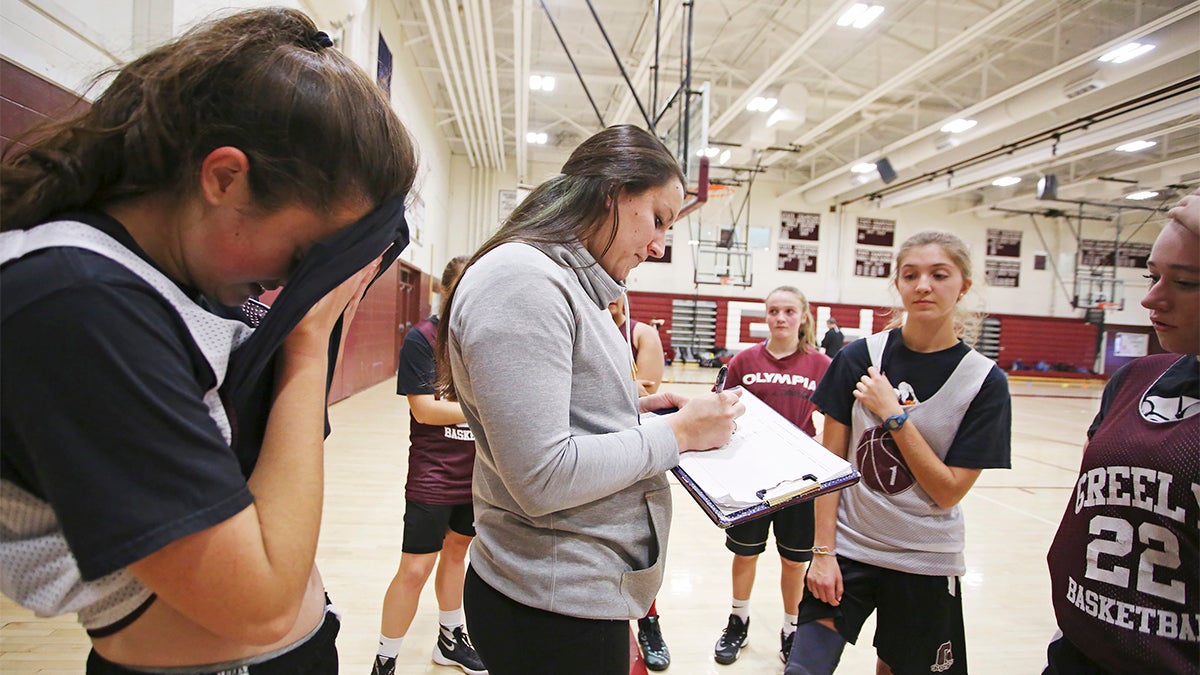The right feedback could keep young athletes in the game

Youth coaches are among the most influential people in a child’s life, alongside parents and peers. They instill a mentality and create an environment that can impact a young athlete’s future success.
In a 2018 study, Eric Legg and Aubrey Newland looked specifically at the environments a coach creates and found a mastery climate is most successful at getting youth athletes to succeed.

There are two motivational climates that these athletes face: a mastery climate or a performance climate. A mastery climate focuses on encouragement to adopt goals that focus on skill mastery, effort and improvement. A performance climate is focused on winning over improvement.
A mastery climate incorporates self-determination theory (SDT), which holds that in order to achieve the highest goal a player has, three essential needs must be met: competence, autonomy and relatedness.
Researchers concluded autonomy was the most influential of the three. Giving participants options and explaining why or how each option will benefit the athlete will lead to an independence and encourage growth rather than focus solely on winning.
“A really simple way is just to explain why you do (drills or plays) beyond just ‘because I said so,’” Legg wrote in the study’s report. “One thing to do to create (an environment with) autonomy support is to have the kids design their own plays and teach it to the other players.”
With these ideas incorporated and executed, a coach can create an empowering climate for his or her athletes.
Although an empowering environment, one that includes a mastery climate, is proven to lead to the most successful athletes, a disempowering climate remains widespread throughout youth athletics. Participants who feel they are not growing or learning may become discouraged and leave the sport.
Coaches may not be aware of the climate they are creating and the negative impact it has on their players. Observational feedback could be the solution to high dropout rates in youth sport participants, by helping coaches to become aware of the climate they create and changing that environment in a positive manner.
Observational feedback was the method used in the study conducted by Legg and Newland. Fifty-six coach participants were watched: 28 received observational feedback via email after the study. Participants of all eight teams involved then filled out a questionnaire at the end of the season, answering questions to help determine how the athletes perceived the environment a coach created.
“Ideally, observational feedback should come from a trained professional,” Legg explained. “However, that is not always practical. Having other coaches observe and provide feedback is better than nothing.”
The study led to two practical applications for coaches to consider.
First, positive youth development is most strongly impacted by autonomy support. Coaches should focus on effort and improvement more than winning, while answering player’s questions, explaining exercises or decisions and encouraging players to take initiative.
Second, coaches who received feedback scored higher in elements that created an empowering climate. However, those who were observed scored similarly in categories pertaining to a disempowering climate as those who were not observed.
On a five-point scale, based on a questionnaire filled out by the athletes who participated, observed coaches showed a four-tenths positive difference when it came to a climate with autonomy support and a two-tenths positive difference for creating a mastery climate. Both coaches who received feedback and those who did not scored almost equally in creating a performance climate that was controlling. These differences were slight, but present, therefore suggesting it is too early in research around observational feedback to dismiss the study.
“In general, it is a good idea to be checking in with our athletes, seeing what they are getting out of the program and how to improve,” Legg said.
Observational feedback should still be considered as a means of improving team climates. As coaches grow to be aware of the environments they are creating, the youth sport participation retainment rate could rise.
Ellie Simpson is a senior sports journalism student at Arizona State University.
Related Articles
Survey finds money can be reason parents misbehave at sporting events
Have parents ruined sports for kids?
Sitting the bench the No. 1 issue between parents, coaches
Four things to help your student-athlete earn a degree
When a school won’t recruit you, you should recruit a school


